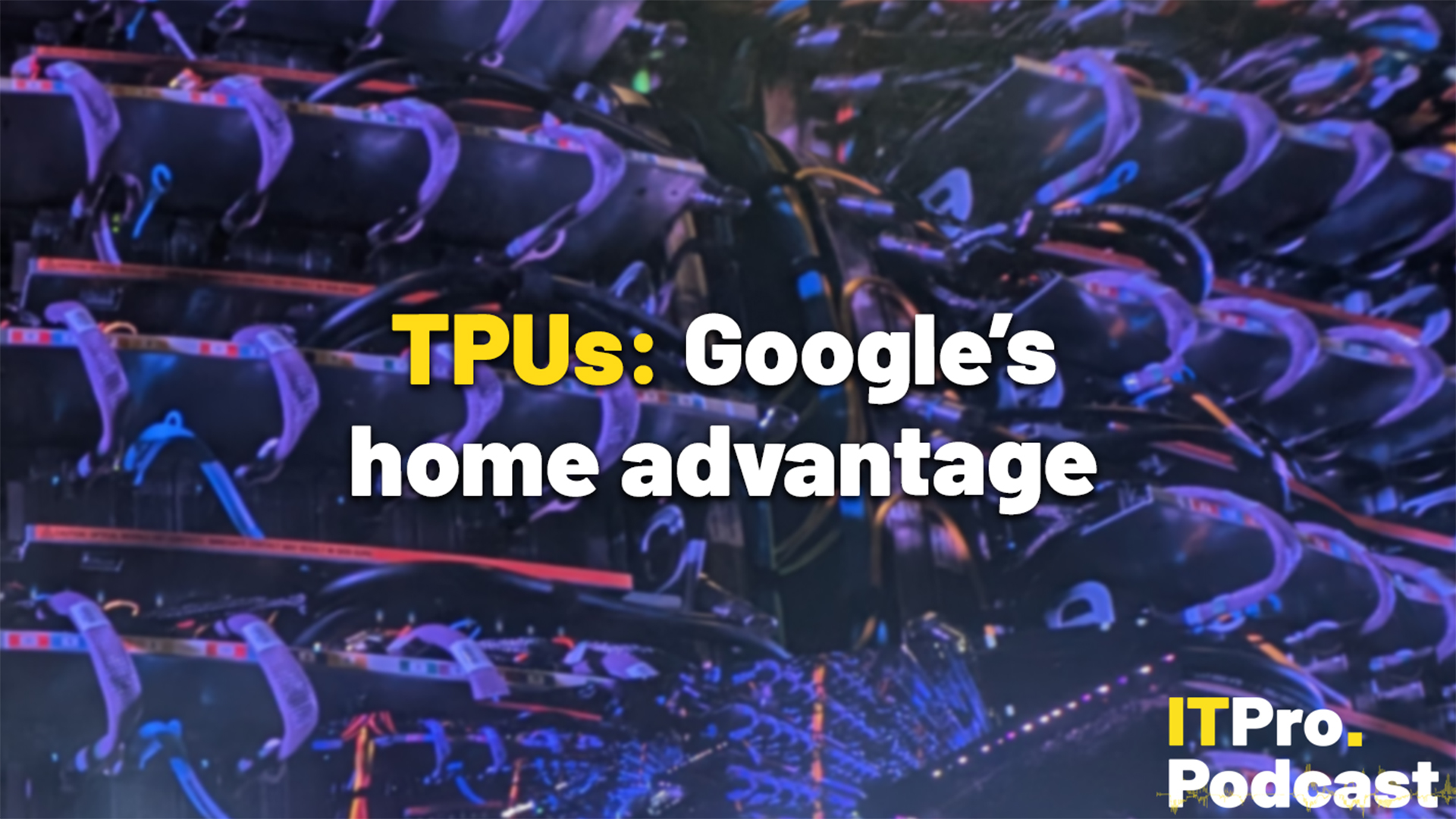Presented by Huawei
Does AI level the playing field for small businesses?
The odds have always been stacked against smaller businesses, but with AI now so accessible, and affordable, the gains are there to be had


All businesses that digitize their operations will know by now that you don’t simply stop once that process has begun. Digital transformation was never the final destination but merely the first step in a continuous journey to the future.
Once you start migrating to the cloud, or deploying SaaS, the real excitement can begin, and through AI, businesses can start to become ‘intelligent’. Here we might describe this as ‘AI-ready’ and for small businesses, it can be the best possible way to be ready.
By 2030 it’s estimated that for every 10,000 workers, there will be 1,000 robots, according to Huawei’s Intelligent World 2030 report. What’s more, the report suggests that 65% of global electricity will come from renewable sources and the world will be generating 1 TB of data per year. Such data will no doubt power AI systems, and, potentially, give smaller businesses the power to take on larger enterprises.
Small businesses and the benefits of AI
It is fair to say that AI is the hottest topic in tech right now and that heat will only increase as we move towards the end of this decade. Across America, 91% of small businesses say they are ‘actively’ using AI to help grow and future-proof themselves, according to a study from the US Chamber of Commerce. The institution’s Impact of Technology on Small Business report from 2024, also suggests that technology is helping smaller firms provide more tailored services that enable them to compete with larger companies.
Over the next three years, 92% of companies plan to increase their AI investments, according to McKinsey research. But while nearly all companies are investing in AI, only 1% of leaders call their companies “mature” on the deployment spectrum. What they mean is that AI is not fully integrated into workflows or driving substantial business outcomes as yet. That is the big question for business leaders, according to McKinsey, how can organizations get closer to AI maturity?
The odds have always been stacked against smaller businesses, as large enterprises and corporations have deep pockets, greater resources, and bigger influence over markets and new technologies. However, AI has become so accessible, and affordable, that it is no longer a tool for the elites – everyone can access and use AI in some form or another.
From idea generation to automation, AI can offer solutions that allow small businesses to create and operate beyond their size limitations. By overcoming limitations of time, personnel, and resources, AI has the potential to put smaller businesses on par with larger organizations.
Sign up today and you will receive a free copy of our Future Focus 2025 report - the leading guidance on AI, cybersecurity and other IT challenges as per 700+ senior executives
The generative AI tools we have now pre-installed into hardware are a good example of how typical office tasks can be sped up, such as text generation and text analysis. We also have various forms of AI tools and software that take the pain out of most jobs, but also enhance processes; if you think of analytics, recruitment, and procurement, all of these business processes have been transformed with AI over the last few years.
Data-driven decision-making is a key area of strategic gain for smaller businesses. With the information largely held in their own cloud storage, or not being used from their various endpoints, AI can help businesses tap into a wealth of knowledge and become more intelligent; and make more shrewd decisions for their sales and marketing teams. Identify areas of potential growth and hire the right people. Streamline parts of their operations and find efficiencies and savings.
Whether businesses use in-house tools or third-party providers, each one is a great example of where you can find data-driven actionable insights. It is here that AI can arguably help a small operation make the best strategic decisions.
This includes predictive analytics where AI can make predictions for market trends and customer behavior so the business can anticipate potential changes or future opportunities. Retailers, for example, use predictive analytics to optimize stock levels and supply chain efficiencies, which ultimately improves the accuracy of their inventory management.
Recruitment software can read and process applications rapidly, matching your job description to suitable candidates – much faster than a team of people could. This, perhaps, is the greatest argument for small businesses looking for what AI can do for them: it helps you go beyond your limitations.
Can AI compensate for size limitations?
For small businesses, one of the most obvious limitations they have is personnel; with less staff, there is, seemingly, less they can physically do at any given time. Also, a smaller pool of people means a smaller pool of talents and skill sets.
Here AI is almost like a fresh set of highly skilled employees, able to automate tasks or analyze data at a speed and efficiency that is impossible for humans.
Error reduction is perhaps the key for small businesses; with AI systems and their ability to learn and adapt, businesses can significantly reduce the likelihood of human error. The precision available is highly valuable in areas like financial accounting or data management.
AI is also a wonderful enhancement of a great many things. Customer service systems, IoT and automation networks, and even your corporate messaging. Many firms already use AI to automate marketing and social media communications with services like Buffer or SocialFlow. We are also seeing more examples of marketing content that has been created with generative AI. This has been game-changing over the last two years as it has been widely used to create imagery, messaging, and even whole articles for business promotion.
Many firms already use AI to automate marketing and social media communications with services like Buffer or SocialFlow. We are also seeing more examples of marketing content that has been created with generative AI. This has been game-changing over the last two years as it has been widely used to create imagery, messaging, and even whole articles for business promotion.
Even the humble chatbot is having a second wind thanks to the powers of generative AI. Customer-facing bots laced with generative AI have taken the weight off sellers and customer service agents by handling the initial parts of the conversations. These can be regular frustration points, but canned responses on website chatbots have been solving this issue, fairly swiftly, for years. And with generative AI it will largely replace that negative customer experience with precise information tailored to the needs of almost any business (or customer).
With the cloud now a necessity as opposed to a trendy new thing we might move to, our attention has fully turned to AI and what it can do. Here, the small business has a tool of such profound potential, that we might usher in an age where size really doesn’t matter.
Bobby Hellard is ITPro's Reviews Editor and has worked on CloudPro and ChannelPro since 2018. In his time at ITPro, Bobby has covered stories for all the major technology companies, such as Apple, Microsoft, Amazon and Facebook, and regularly attends industry-leading events such as AWS Re:Invent and Google Cloud Next.
Bobby mainly covers hardware reviews, but you will also recognize him as the face of many of our video reviews of laptops and smartphones.
-
 Trump's AI executive order could leave US in a 'regulatory vacuum'
Trump's AI executive order could leave US in a 'regulatory vacuum'News Citing a "patchwork of 50 different regulatory regimes" and "ideological bias", President Trump wants rules to be set at a federal level
-
 TPUs: Google's home advantage
TPUs: Google's home advantageITPro Podcast How does TPU v7 stack up against Nvidia's latest chips – and can Google scale AI using only its own supply?
-
 What does a smart campus look like and how far away is it from being a reality?
What does a smart campus look like and how far away is it from being a reality?Supported Content Smart campuses are a growing trend as our educational institutions try to modernize their infrastructure and processes for the modern age
-
 How AI and digital transformation are game changers for the finance industry
How AI and digital transformation are game changers for the finance industrySupported Content Advances in generative AI technology are enabling financial services institutions to unlock marked efficiency benefits
-
 What role will the cloud play in the AI era?
What role will the cloud play in the AI era?Supported Content For most businesses, cloud technology will be essential for leveraging AI without making huge investments
-
 How AI innovation is driving educational excellence
How AI innovation is driving educational excellenceSupported Content Generative AI is helping students learn and educators teach, and the classroom of today is shaping the future of work
-
 What does a data center look like in the AI era?
What does a data center look like in the AI era?Supported Content The AI boom has necessitated major changes in the architecture of data centers, take a look at how AI data centers differ from traditional cloud infrastructure, and the key features required to handle complex, energy-intensive AI workloads
-
 What role will partners play in realizing our collective AI dreams?
What role will partners play in realizing our collective AI dreams?Supported Content When venturing into unknown territory, you should seek to partner up with organizations that can share in your vision and help you implement AI faster
-
 Which industries are leading the charge when it comes to AI innovation?
Which industries are leading the charge when it comes to AI innovation?Supported Content From healthcare to finance, industries are not only adopting AI solutions but driving innovation in how the technology can produce tangible benefits for end users
-
 Dr. AI: How will artificial intelligence and other emerging technologies make for a better healthcare experience?
Dr. AI: How will artificial intelligence and other emerging technologies make for a better healthcare experience?Supported Content With the right safeguards in place, AI can help healthcare professionals make new discoveries or free themselves up to spend more time with patients
